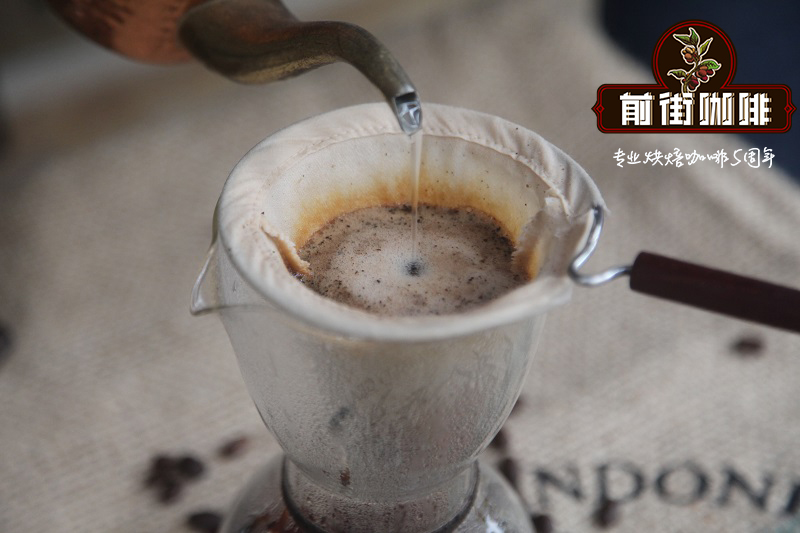What are the requirements for the growing conditions of coffee beans? Is there anything particular about planting? How do you plant it?

Professional coffee knowledge exchange more coffee bean information please follow the coffee workshop (Wechat official account cafe_style)
What are the requirements for the growing conditions of coffee beans? Is there anything particular about planting? How do you plant it?
Yangsheng Coffee VS Shade Coffee
Coffee lovers will study how to roast and grind coffee beans, but seldom delve into how coffee beans are grown. Coffee trees were originally not sun-resistant. Before the 1970s, almost all coffee trees were planted in Arabica under high-altitude forests, and their coffee products were classified as "shaded coffee" (Shade-grown coffee). Later, a more sun-resistant coffee variety, Robusta, appeared. Because of its higher yield and easier management, producers planted a large number of trees, and for this reason, they shoveled away the forests. This variety of coffee products is called "Yangsheng coffee". At present, about 80% of the coffee beans on the market are grown in yang, and only the remaining two are environment-friendly "shade coffee".
Coexistence of coffee and forest ecology
The tree species that cultivate shady coffee depend on the forest, while coffee farmers will plant pineapple trees, banana trees and other fruit trees near the coffee trees to provide natural shade from the sun. it is also a habitat for animals such as ants, beetles and birds. Relatively speaking, the cultivation of sunny coffee requires the use of a large amount of pesticides and chemical fertilizers, coupled with the shoveling of a large number of trees, which will disrupt the rainforest ecosystem and cause soil erosion by wind and rain, causing not only insect pests but also loss of soil nutrients. On the contrary, the tree species of shady coffee can symbiosis with the forest, using fallen leaves as natural fertilizer, which helps to protect the ecological environment and biodiversity of the rainforest.
It takes a lot of patience to grow coffee, because it takes three to five years for coffee trees to bear their first fruits.
In terms of one hectare of coffee fields, the annual output of Yangsheng coffee is about 1600 kg, while shady coffee is only 550kg, which is 25 to 40 per cent of Yangsheng coffee.
Chen Peizhen, a senior mentor at the Green Garden Foundation, points out that growing shady coffee can preserve a variety of ecological features, such as birds, ants, and beetles. As many as 150 species of birds can be found in the shady coffee garden, while there are only 20 to 50 species in the Yangsheng coffee garden.
Coffee trees cultivated in a shady way have lower caffeine and less bitter taste. By supporting shady coffee, coffee farmers are not only encouraged to return to traditional farming methods to protect forest ecology and the homes of birds, but also a choice for consumers to take responsibility for the environment. The following is a list of tree-lined coffee sold in Hong Kong with rainforest protection or bird-friendly eco-label certification on the package.
Important Notice :
前街咖啡 FrontStreet Coffee has moved to new addredd:
FrontStreet Coffee Address: 315,Donghua East Road,GuangZhou
Tel:020 38364473
- Prev

What conditions do coffee trees need to meet to grow well? How to plant coffee trees?
Professional coffee knowledge exchange more coffee bean information please follow the coffee workshop (Wechat official account cafe_style) what conditions do coffee trees need to meet to grow well? How to plant coffee trees? The development of rainfall coffee needs sufficient moisture, the annual rainfall should be at least 1000 mm, and the maximum should not exceed 3000 mm. The rainfall should not be excessive or moderate, if the sauce is too much for a while.
- Next

The cultivation environment of coffee trees? Is Robusta more suitable for planting soil? What planting conditions?
Professional coffee knowledge exchange more coffee bean information please pay attention to the coffee workshop (Wechat official account cafe_style) coffee tree cultivation environment? Is Robusta more suitable for planting soil? What planting conditions? Due to the physiological characteristics of coffee trees, there are only a few areas in the world that can cultivate coffee beans commercially. It is mainly limited by temperature, because coffee trees are very tolerant.
Related
- Detailed explanation of Jadeite planting Land in Panamanian Jadeite Manor introduction to the grading system of Jadeite competitive bidding, Red bid, Green bid and Rose Summer
- Story of Coffee planting in Brenka region of Costa Rica Stonehenge Manor anaerobic heavy honey treatment of flavor mouth
- What's on the barrel of Blue Mountain Coffee beans?
- Can American coffee also pull flowers? How to use hot American style to pull out a good-looking pattern?
- Can you make a cold extract with coffee beans? What is the right proportion for cold-extracted coffee formula?
- Indonesian PWN Gold Mandrine Coffee Origin Features Flavor How to Chong? Mandolin coffee is American.
- A brief introduction to the flavor characteristics of Brazilian yellow bourbon coffee beans
- What is the effect of different water quality on the flavor of cold-extracted coffee? What kind of water is best for brewing coffee?
- Why do you think of Rose Summer whenever you mention Panamanian coffee?
- Introduction to the characteristics of authentic blue mountain coffee bean producing areas? What is the CIB Coffee Authority in Jamaica?

